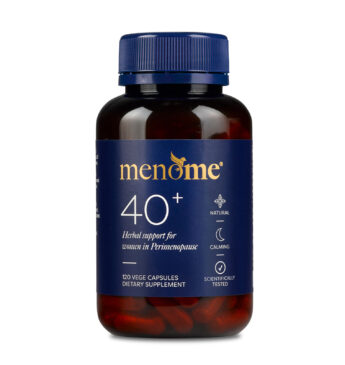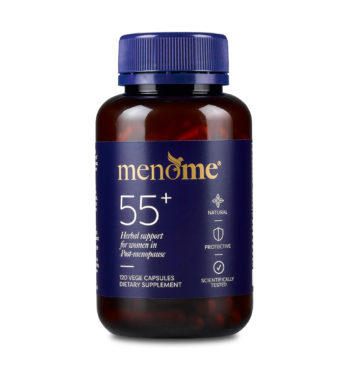Menopause Joint Pain Supplements
For Women in Perimenopause
For Women in Posst-menopause
Is joint pain normal during menopause?
Yes. Joint pain is one of the common issues for women in midlife. In fact, at times it’s been dubbed ‘menopause arthritis’. The reason for joint pain is that the hormone estrogen plays an important role in joint and bone health. In point of fact, estrogen is anti-inflammatory and minimises swelling in the joints. Equally important, estrogen aids the regulation of fluid levels in the body. And if fluid levels lower or lead to dehydration, the level of uric acid can increase thereby causing joint pain. Therefore, as one of the hallmarks of menopause is declining estrogen, swollen and painful joints can become an unwelcome issue.
What helps joint pain during menopause?
There are several things you can do to mitigate joint pain during menopause. Firstly, we recommend focusing on ensuring your shifting hormone levels are as balanced as possible. When you take this forward-front approach you’re addressing the root cause of the condition. As a result of implementing this, you can then back it up with lifestyle factors. These include a diet rich in minerals and anti-inflammatory whole foods such as fruit and veg. Additionally, calcium is a key bone nutrient and it needs magnesium to be absorbed properly. Leafy green vegetables, fruit, nuts and whole grains are good sources of these. Also, turmeric, which contains anti-inflammatory curcuminoids is well-researched for the relief of joint pain. Support these by ensuring your weight is at a healthy level and mitigating stress (as much as possible). Also, try taking up low-impact exercise such as swimming, dancing, yoga or Pilates.
What is the best supplement for menopause joint pain?
We would suggest MenoMe® 40+ and 55+. During pharmaceutical-grade clinical trials, the EstroG-100™ used in both 40+ and 55 was shown to alleviate joint pain. EstroG-100™ is a patented herbal root blend of Cynanchum wilfordii, Phlomus umbrosa and Angelica gigas Nakai. Together this combination helps to balance estrogen metabolism with a direct effect on estrogen receptor function.
As well as being proven in both the laboratory and in human trials they have a rich history in Korea and China. Indeed, they have 400 years of documented use as folk medicine. EstroG-100™ works with the body’s biochemistry to regulate estrogen. In addition, it has no known adverse side effects and a very high safety profile.
Should you choose 40+ or 55+?
We understand that the needs of women in perimenopause are distinct from those who are in post-menopause.
That’s why MenoMe® have created different supplements best suited to each of the two stages of menopause. For those women in perimenopause, we recommend 40+ (named because on average, women enter perimenopause at around age 40, though of course each person is different).
55+ is designed for women in post-menopause (on average, women enter post-menopause around 52-55 years of age).
Both 40+ and 55+ contain the same quality of our superhero ingredient EstroG-100™. This means they provide exactly the same level of hormone-balancing properties to help alleviate many of the symptoms of menopause.
The difference between the two, is that 55+ also contains Enzogenol® which is extracted from New Zealand pine bark. This all-natural ingredient provides superior antioxidant support for healthy bones, brain and heart all of which become super vulnerable post-menopause. Magnesium and vitamin D are also added to 55+ to help with moods and sleep. In other words, 55+ is an all-in-one supplement that supports you through many of the well-known symptoms of menopause (beginning during perimenopause and continuing into post-menopause). However, it also provides antioxidant support for the degenerative diseases that become a higher risk to women in their post-menopause years.
You may of course choose to stay on 40+ in post-menopause or start 55+ earlier in perimenopause. The choice is yours and will depend on your budget and other supplements you may be taking. Or, you may want extra support before entering post-menopause. Either way, we have you covered at MenoMe®.








